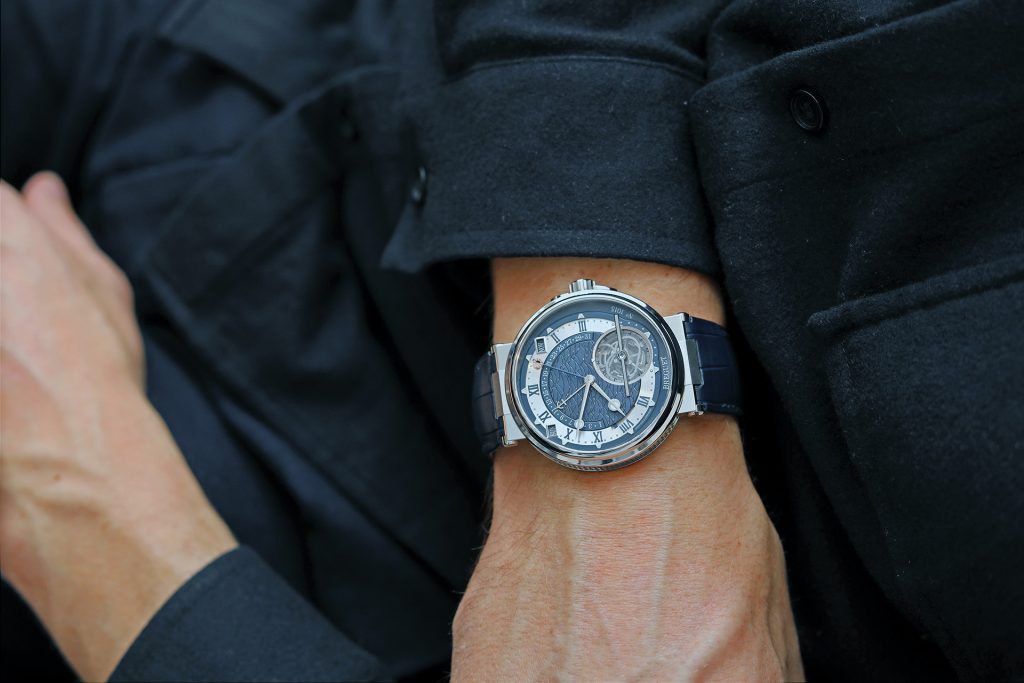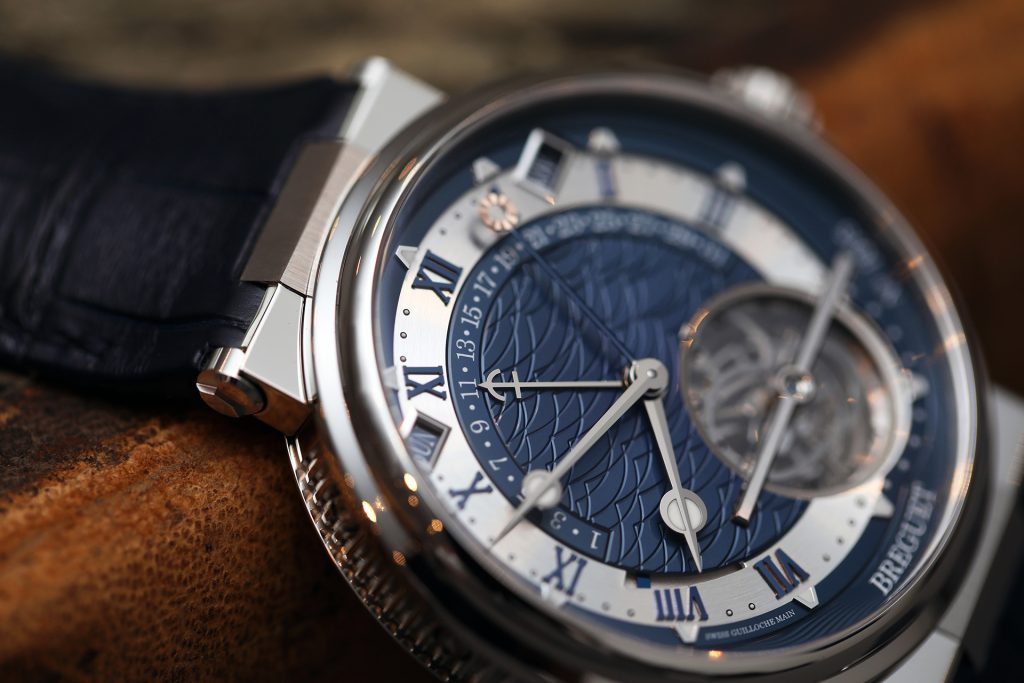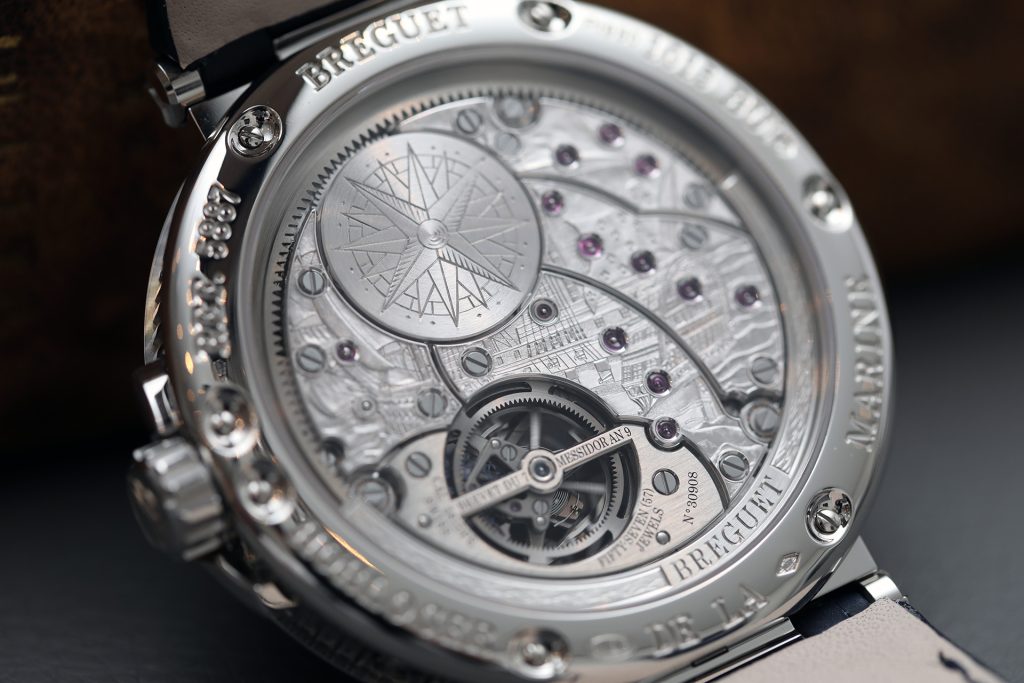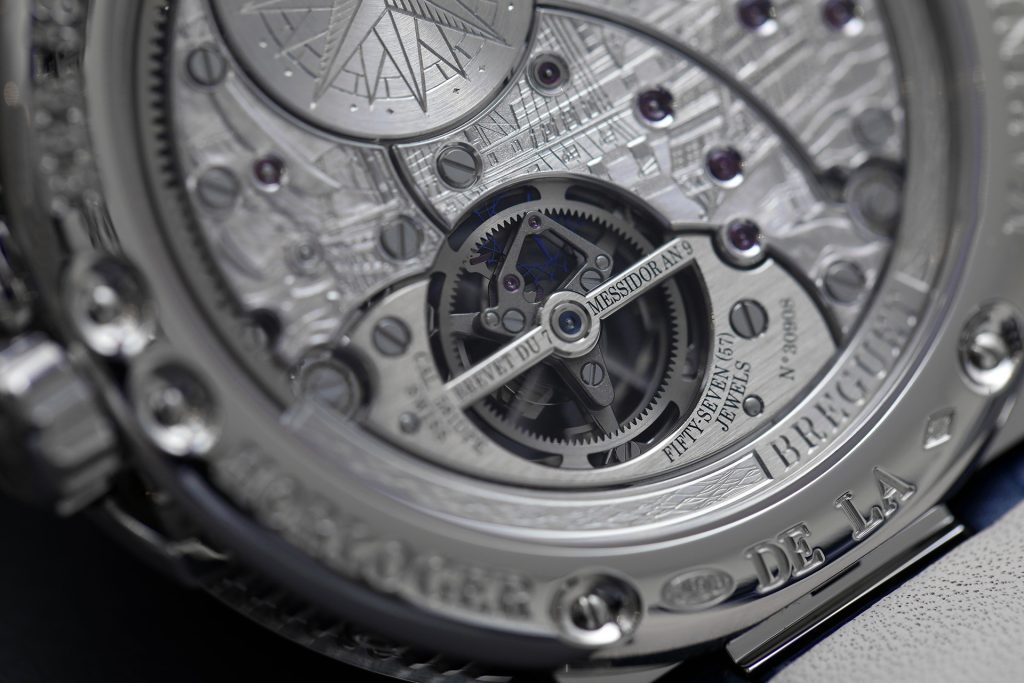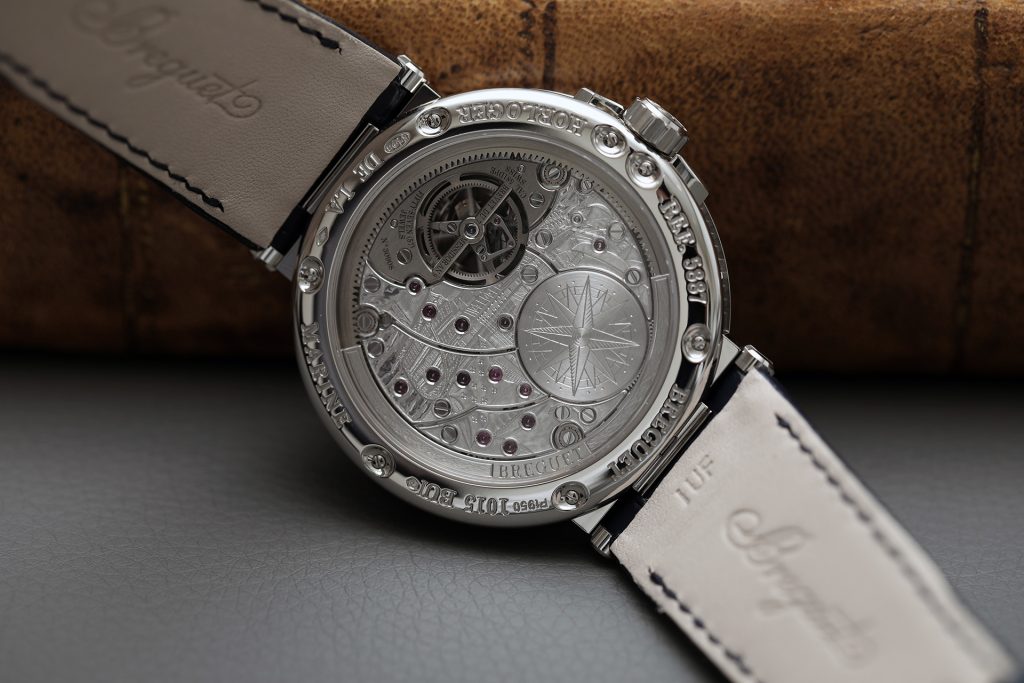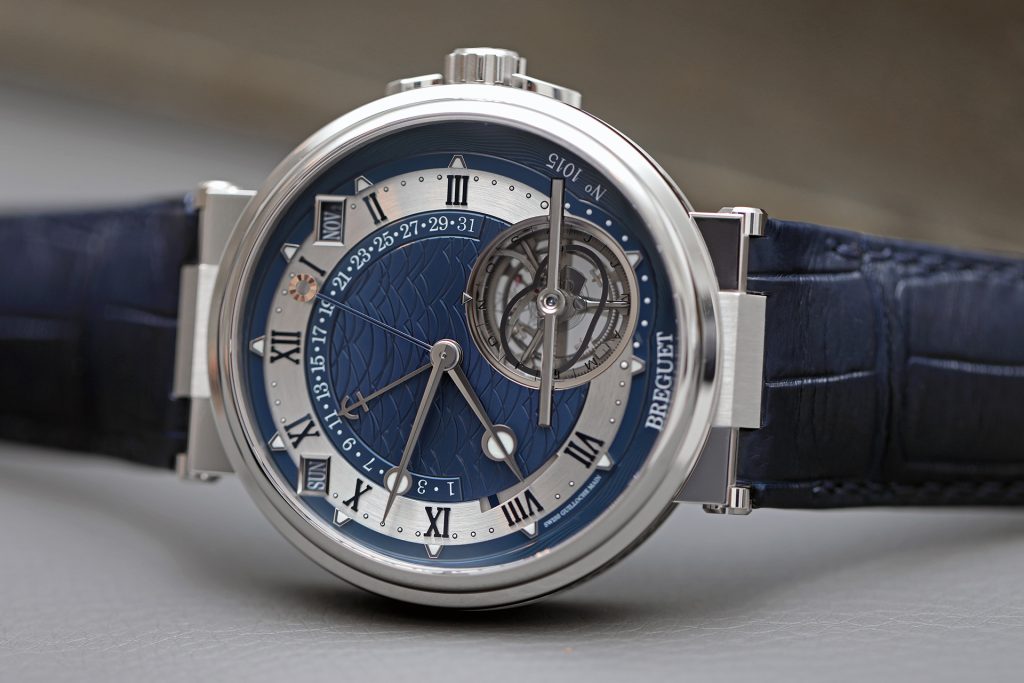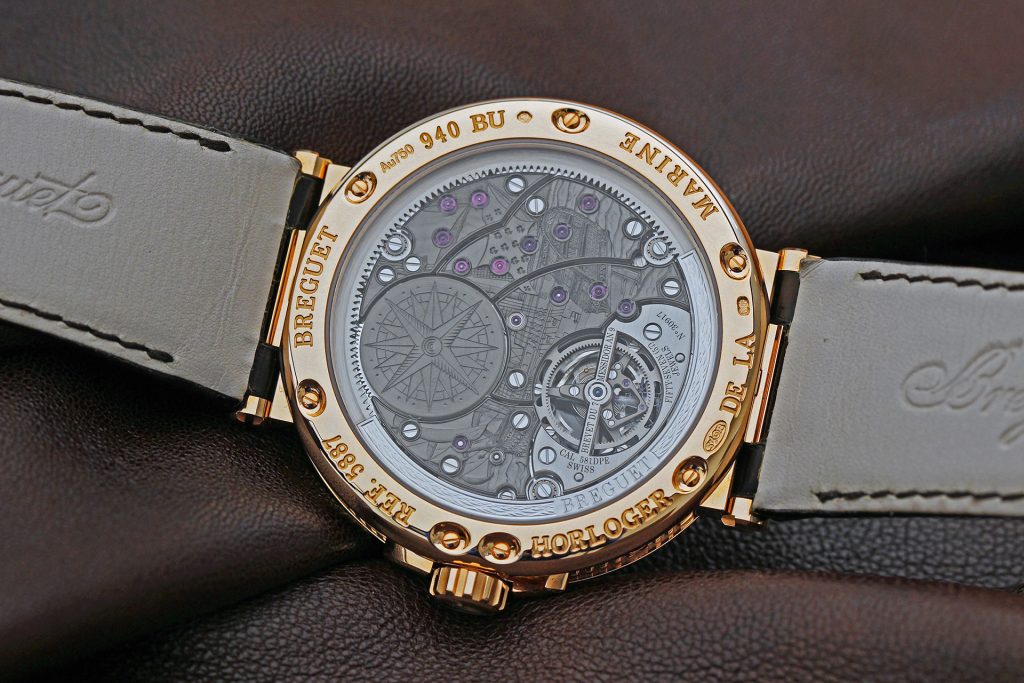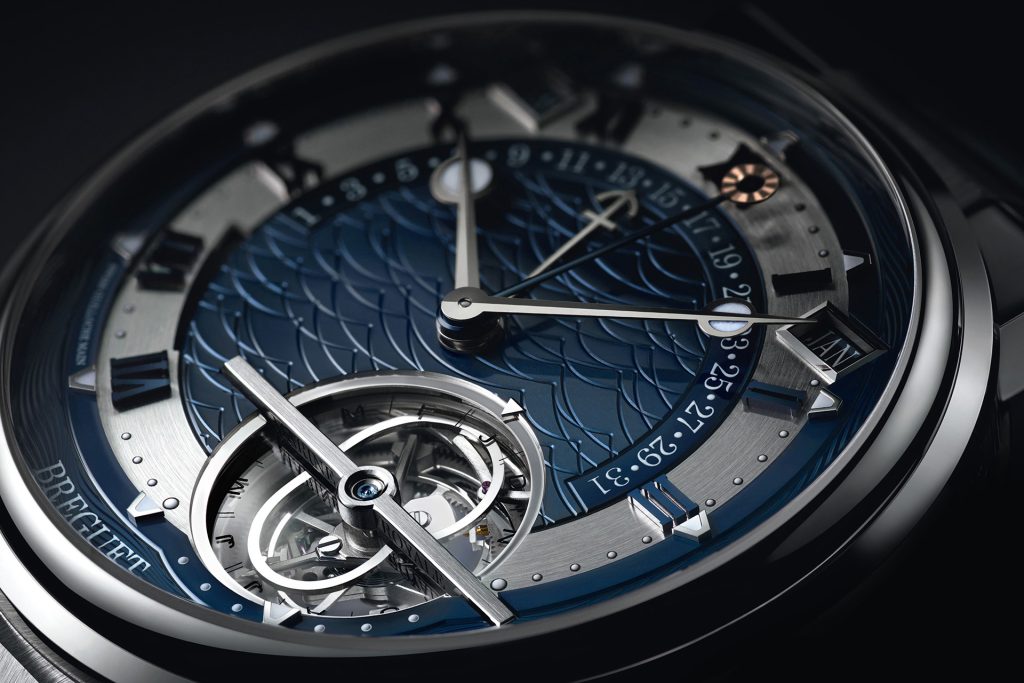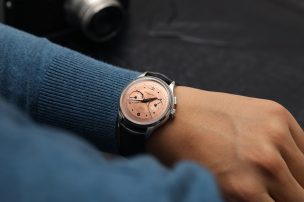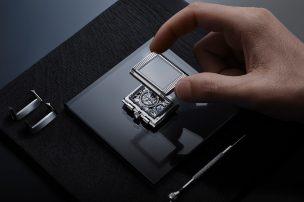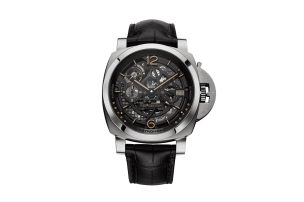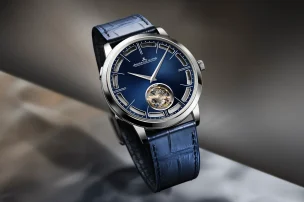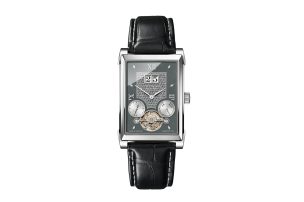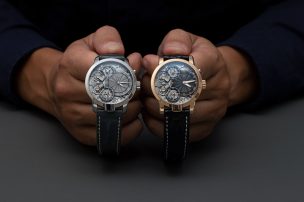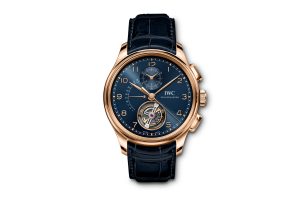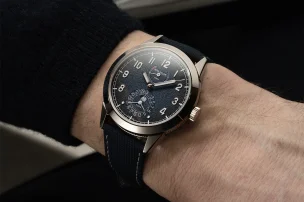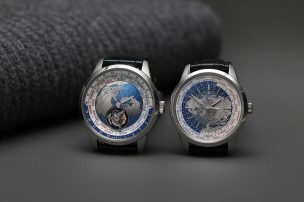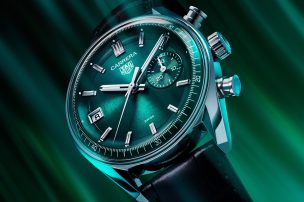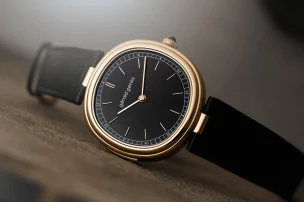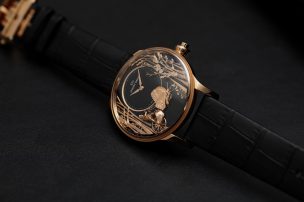
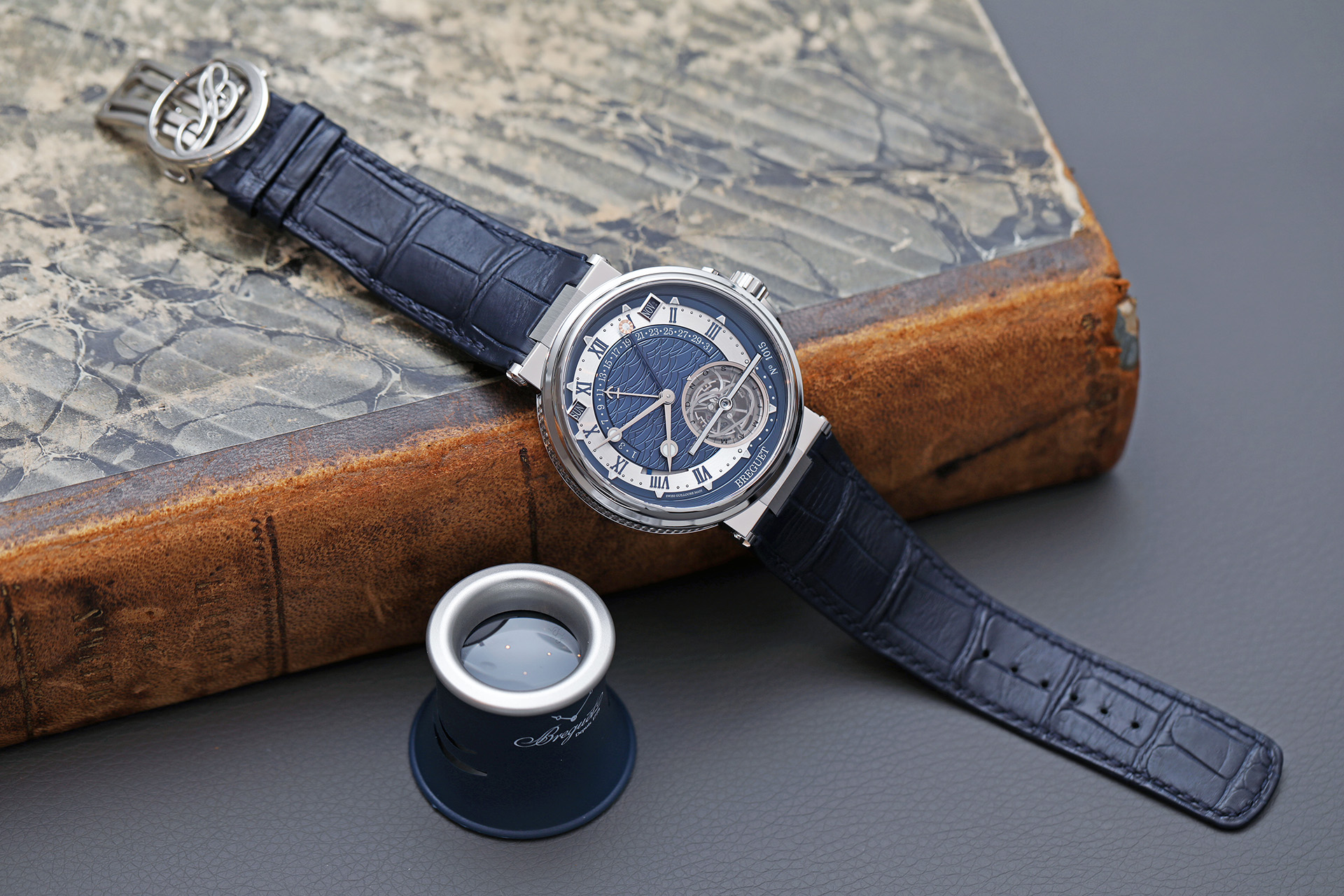
Keeping The Sun In Sight – Breguet Marine Équation Marchante 5887
At a time when the battleship Royal Louis of the French Royal Navy had to fight for its nation’s defence in the 18th century, its crew had to rely on precise navigation tools to calculate their position. They used marine chronometers – also called longitudinal clocks – because the determination of the longitude on the sea was crucial for an accurate calculation. Already at young age, a watchmaker called Abraham-Louis Breguet developed an interest in the disciplines of astronomy. However, it was only years later, that he caught the attention of a prominent person, King Louis XVIII., who in 1815 eventually awarded A.-L. Breguet the official title of chronometer maker to the French Royal Navy.
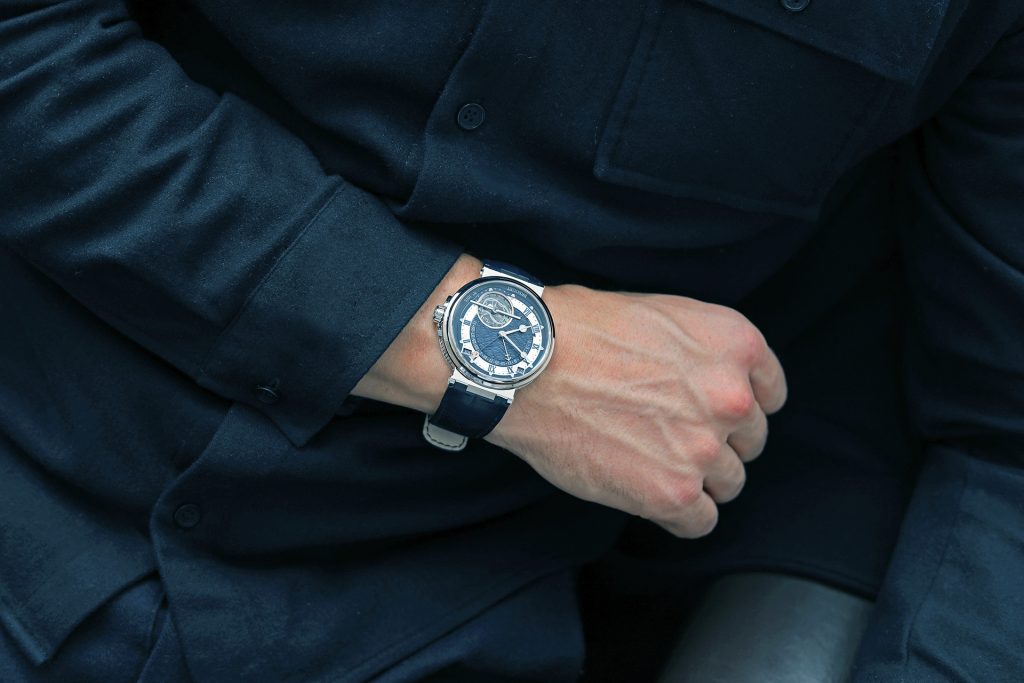
A tribute to the maritime legacy of Breguet – Marine Équation Marchante 5887
In order to calculate the position or longitude on the sea, three things were crucial: a sextant, an astronomical chart (Nautical Almanac) and precise timekeeping. Therefore, it was even more important that the chronometers on ships were as accurate as possible. This was – due to the difficult conditions on the sea – an even advanced challenge. At the beginning of a journey, the marine chronometers were set to Greenwich Mean Time. Being on the sea the mariners used a sextant to calculate the angle between the horizon and the sun in order to determine the true solar time. The difference between these two times helped to calculate the longitude.
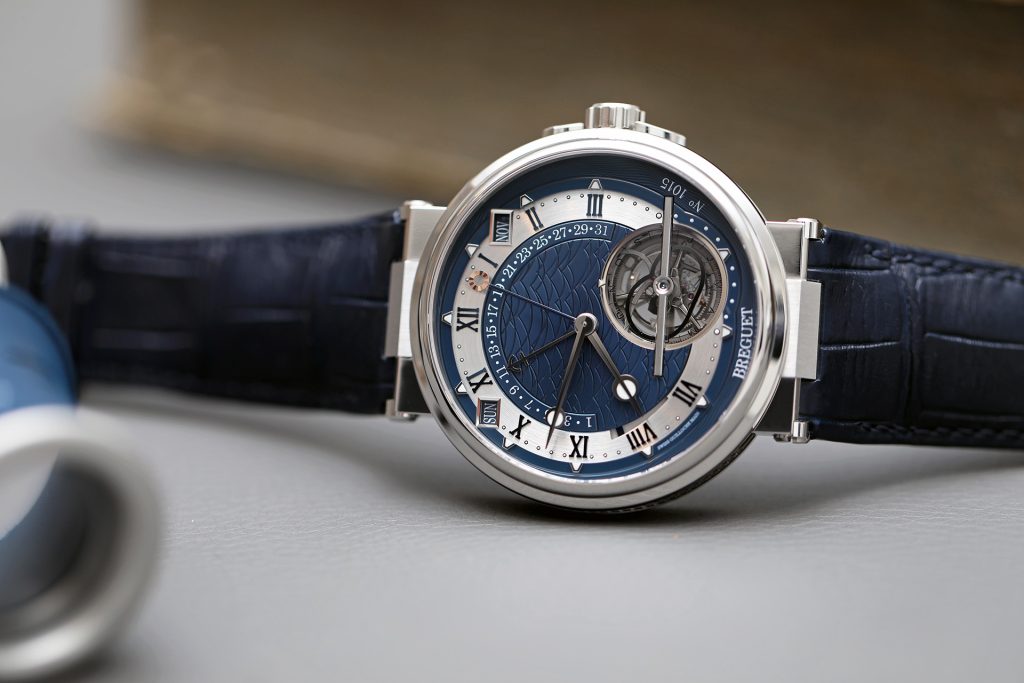
Marine Équation Marchante 5887
We distinguish between civil time (mean solar time) and true solar time. Our clocks, no matter if analogue or digital always display the time divided by 24 hours. As the Earth orbits around the sun in an elliptical rather than circular manner and due to the inclination of the Earth’s axis, it causes deviations of time throughout the year of as much as -16 minutes (November 3rd) and +14 minutes (February 11th). At the beginning of the year the Earth orbits around the sun at a speed of about 29 km/s, picks up some more speed during the year and reaches 30 km/s on June 21st. All these factors contribute to the equation of time.

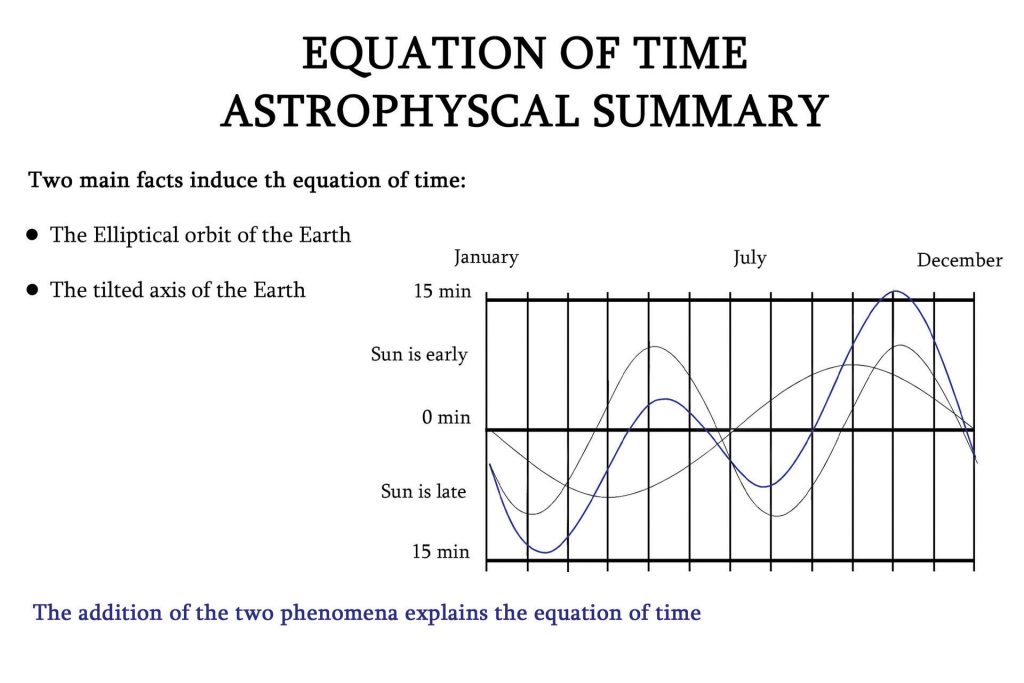
The deviation between civil time and true solar time (left)
The elliptical orbit and the inclination of the Earth’s axis cause the deviation (right)
Only on four days of the year, the true solar time is identical to the civil time, of which latter always runs by our 24 hours principal: on April 15th, June 14th, September 1st and December 24th they are identically to each other. On these days, the navigators were able to determine the longitude even without the chart, only by the sun’s peak and the Greenwich Mean Time.

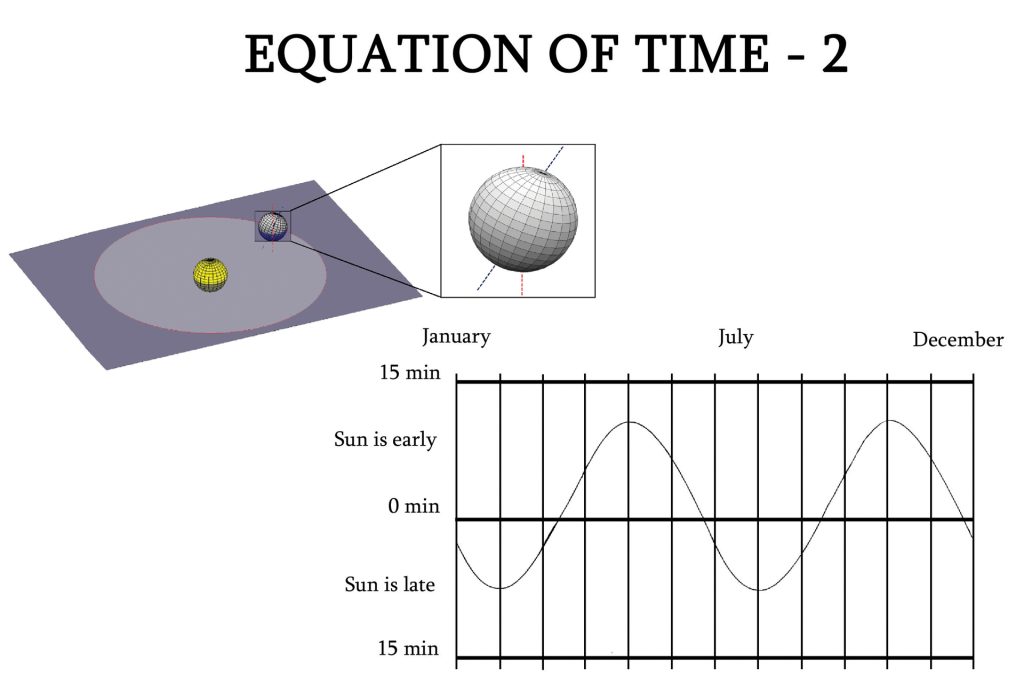
Deviation caused by the elliptical orbit (left)
Deviation caused by the inclination of the Earth’s axis (right)
A.-L. Breguet already produced the first marine chronometers in 1796 and tried himself on new methods to enhance their precision. Hence the models were constantly equipped with new escapements: the constant force escapement (à force constant) or the free double-wheel spring-balance, as they arise from historical publications. In 1815, A.-L. Breguet produced the Chronometer Nr. 428 with two barrels that were switched side by side and mutually wound in order to positively affect its accuracy. In between 1815 to 1823, the brand sold 78 watches in different sizes to the marine.
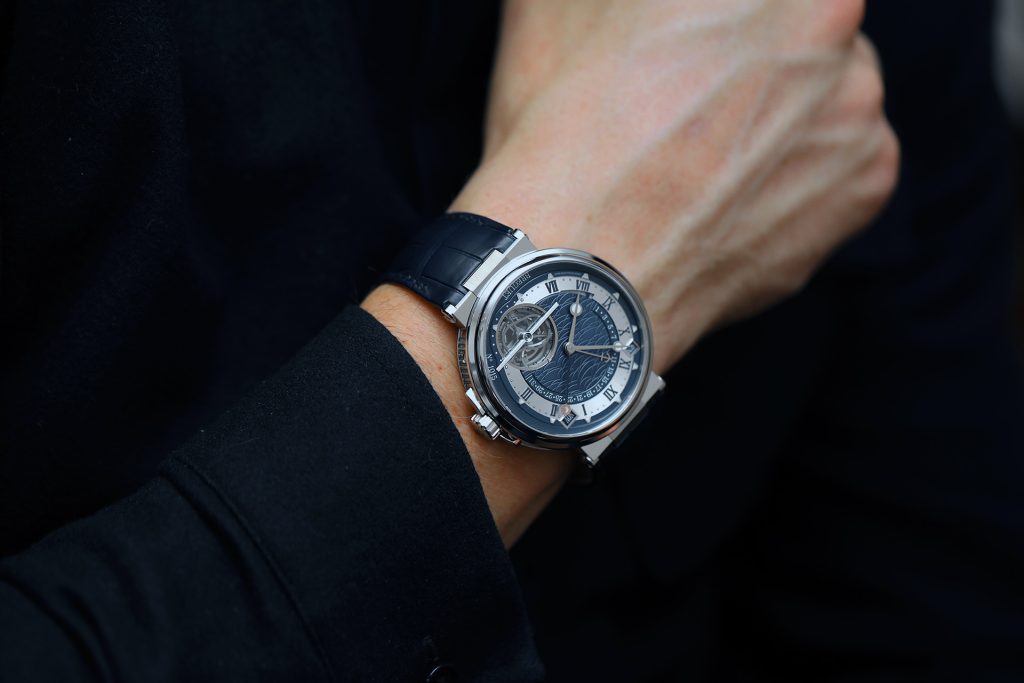
Blue as the sea – the Grande Complication from the Marine line of Breguet
As a tribute to the maritime legacy of Abraham-Louis Breguet, the Maison has launched a very beautiful Grande Complication from their Marine line in 2017. The Marine Équation Marchante 5887 indicates the deviation between civil time and solar time in a very charming way. As in most cases, the complication is displayed on a sub dial or aperture to indicate the minutes of deviation, which then need to be added or subtracted from the civil time. The Marine Équation Marchante 5887 (marchante stands for ‚wandering’) has two minutes hands to display different times. The blue hand with a faceted sun symbol shows the true solar time with the support of a differential gear operated by the movement as well as an equation cam. So basically, it runs along the ordinary minute hand and the deviations are controlled by an additional module. The civil time minute hand is normally powered by the movement.
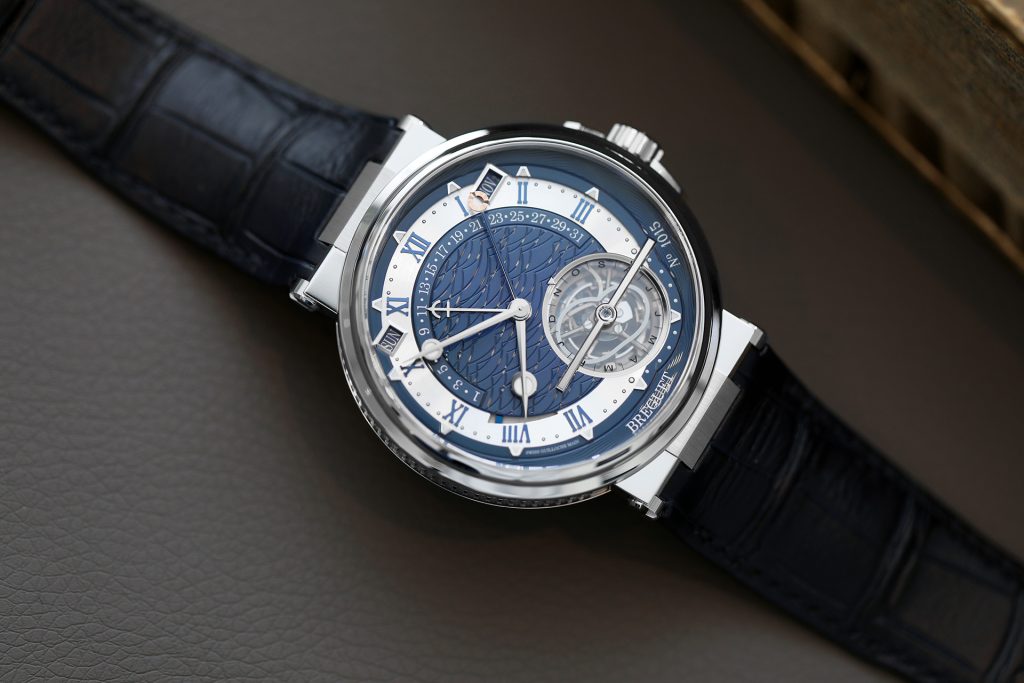
Marine Équation Marchante 5887
The display of the true solar time emerges through an unusually shaped cam. It practically symbolizes the irregular rotation of the Earth’s orbit around the sun. The gear that is connected to the cam needs – simultaneously to the Earth around the sun – on year for one entire rotation. Due to the irregular shaped cam the hand needs more or less time to move along, analogue to the deviation of the true solar time to the civil time. This special cam becomes visible through the Tourbillon window. It is shaped like a figure ‘8’ and mechanically reproduces the path of the sun’s successive position over the period of one year, called analemma curve.
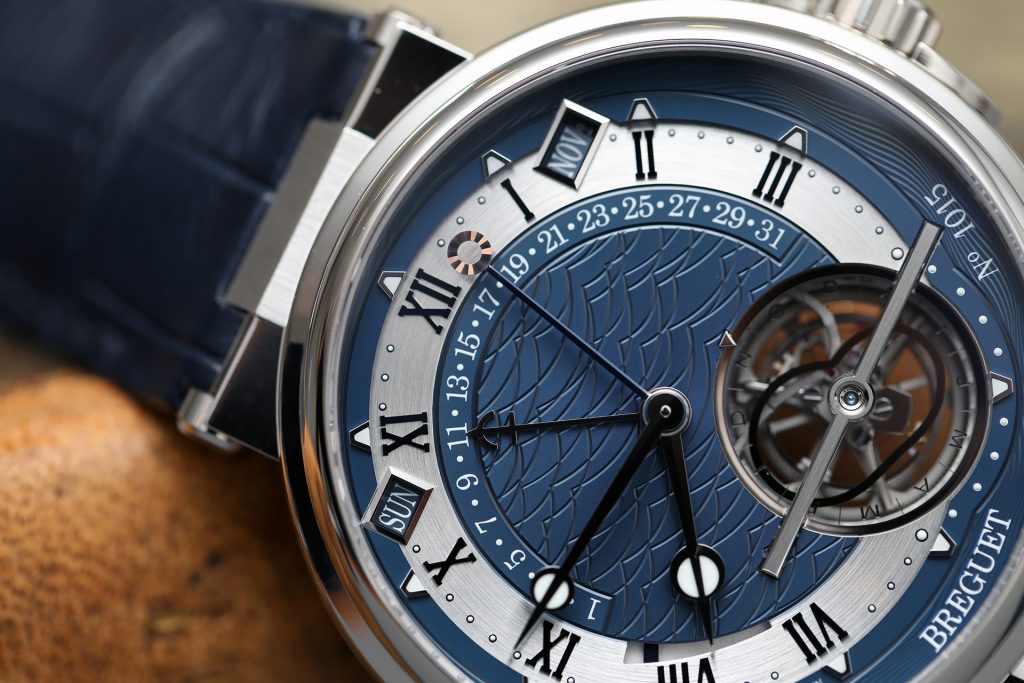
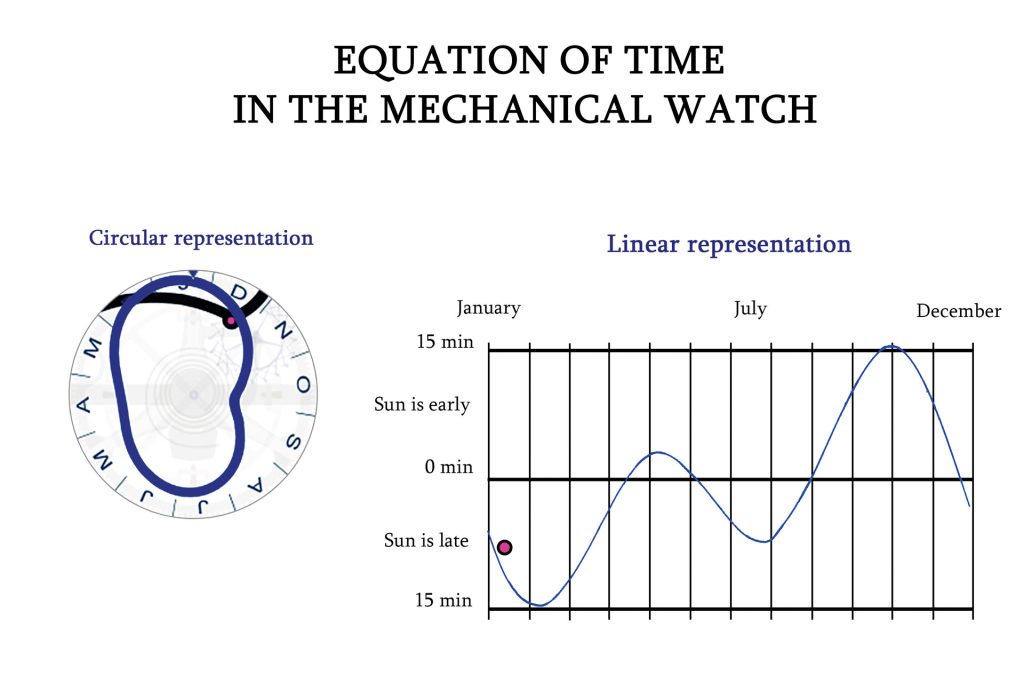
The special designed cam becomes visible through the Tourbillon window (left)
The shape of the cam derives from the sun’s deviation (right)
There are plenty of details that take us to a journey of exploration. They take us back to a time of sea battles and cannon fire. Besides all these technical features we must not disregard the enormous craftsmanship of the engravers. The manufacture seems to continuously reinvent itself. Hence the Royal Louis is displayed on the back of the Marine Équation Marchante 5887. Single parts of the ship have been chased by hand onto the different bridges, that as a whole show a portrait of the historical bark, aesthetically displayed through the open sapphire case back. To further express the chronometric legacy of navigation, the barrel is adorned with a wind-rose motif.
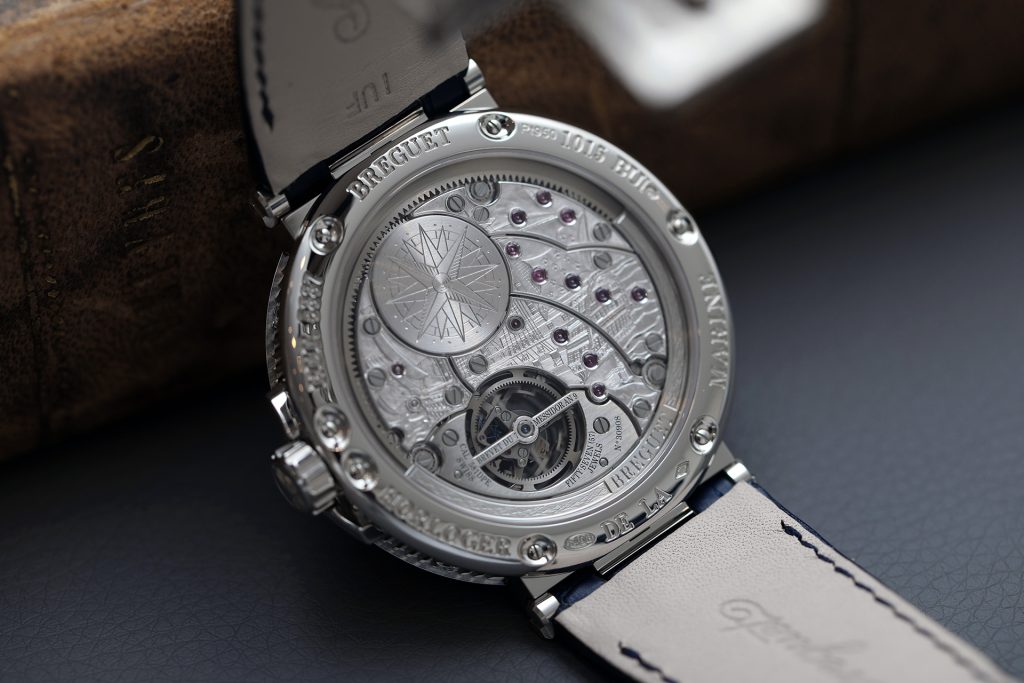
The Royal Louis has been chased by hand into the bridges
We have not yet entered the final harbour of our expedition. Just as proud as the Royal Louis once sailed across the seas, the Grande Complication appears in the same striking way. A one-minute Tourbillon adorns the dial at 5 o’clock. The carriage is made of titanium housing a Breguet balance with a silicon spring that offers a power reserve of 80 hours. The calibre 581DR is on top equipped with a Perpetual Calendar as well as a peripheral rotor automatic winding system that offers an open sight onto the movement and the Royal Louis. The dial is decorated with a new ‘wave’ motif and the Tourbillon bridge has a ‘Marine Royale’ engraving.
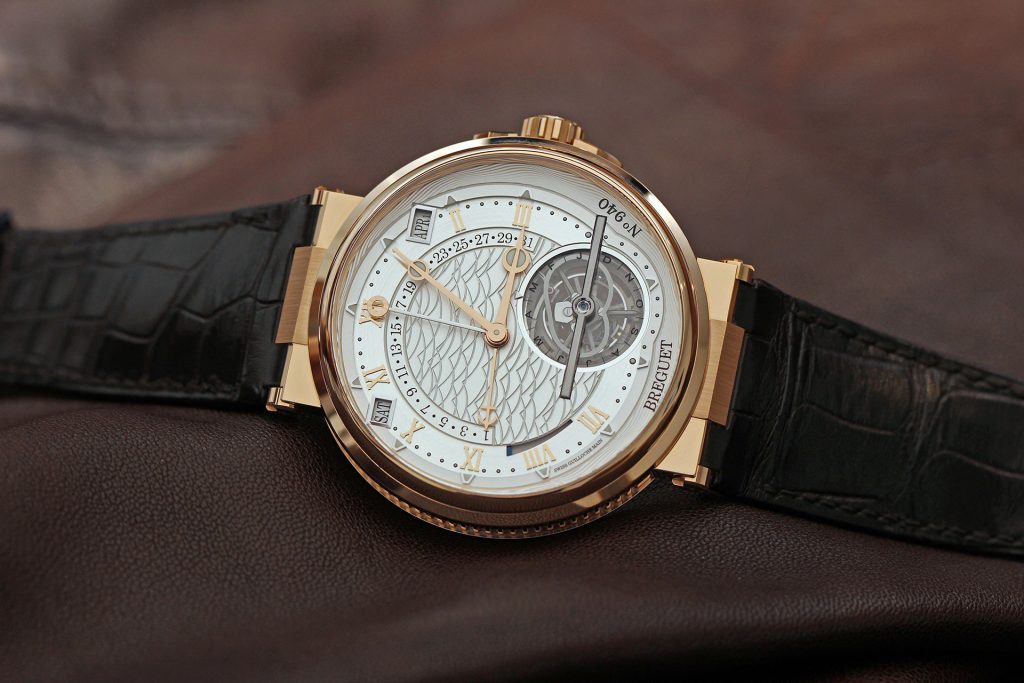
Marine Équation Marchante 5887 in roségold with a dial in silvered gold
The Marine Équation Marchante 5887 comes in two versions: with a 43,9mm case in roségold and silvered dial, or in platinum with a blue dial. The function of the equation of time doesn’t really have any use nowadays and remains reserved for nostalgic enthusiasts. But one could look at it that way: At a time where our life is meticulously scheduled, it might be quite nice to grant yourself some margin in your time management, depending on what time indication on this watch you follow.
